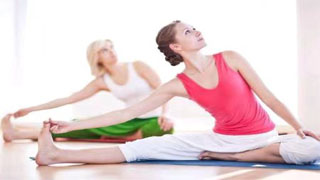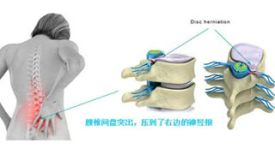
The causes of long-term back pain are mainly: prolonged sitting, imbalanced abdominal pressure, obesity, long-term physical labor, lack of exercise, etc!
In addition to avoiding the main causes of lower back pain as much as possible in daily life, strengthening the core and muscle strength training of the lower back can effectively improve lower back pain!
So today I'm sharing 8 yoga exercises to improve lower back pain. Practice them every night before going to bed, and your entire back will feel much more comfortable. Be sure to keep them safe!
Action 1:
Four point support preparation
Inhale, bend your right elbow and place it at the back of your head
Exhale, tighten the core
The right thoracic vertebra drives the right hand to open backwards and upwards
Pay attention to maintaining stability of the pelvis and lumbar spine
Inhale, restore, repeat 10-12 times
Switch to the other side and continue practicing
Effect: This action mainly enhances the flexibility of the thoracic spine. Spinal flexibility is indispensable, and excessive tension and stiffness of the thoracic spine can affect the cervical and lumbar vertebrae. Therefore, when dealing with lower back pain, it is not enough to just focus on the waist.
Action 2:
Enter the cat cow style
Inhale, rotate the pelvis forward, and extend the spine section by section
Exhale, tighten the core and ribs, and curl the coccyx
Bow your chest and back upwards, filling your upper back with air
Repeat the exercise 10-12 times
Effect: The cat cow style can enhance pelvic flexibility, prevent stiffness in the lumbar spine, and provide excellent flexibility throughout the entire spine.
Action 3:
Knees on the ground, slightly wider than shoulders apart
Place both hands on the inside of both knees
Inhale, rotate the pelvis forward, and feel the extension of the spine
Exhale, tighten the core, and roll the pelvis backwards towards the coccyx
The chest, arched back, and upper back are filled with air
Repeat the exercise 10-12 times
Effect: The principle of this movement is the same as the cat and cow pose, except that it is practiced in a kneeling position.
Action 4:
Keep both knees on the ground and straighten the right leg to the side
Inhale, stretch your hands forward, straighten them, and land on the ground
Exhale, tighten the core
Sit with your hips behind your left heel
Feel the stretch on the inner side of the right thigh
After holding for 5-8 breaths
Switch to the other side and continue practicing
Effect: This action can stretch the inner thigh tension caused by prolonged sitting and relieve lower back pressure.
Action 5:
Knee landing, thighs perpendicular to the ground, body extended forward
Stretch your hands forward, inhale, and pass your left hand through the right armpit
Take 8-10 breaths and continue practicing on the other side
Pay attention to keeping the pelvis and lumbar spine stable after passing the hand through the armpit
Effect: This action not only enhances the flexibility of the thoracic spine, but also strengthens the body's spiral force line through twisting, releasing spinal pressure.
Action 6:
Sit backwards with your hips on your heels and prepare for a big bow
Inhale and move your body forward into the upper dog position
Pay attention to the natural expansion of the chest and collarbone, and relax by sinking the shoulders
Exhale, tighten the core, and bring the hips back to the heels
Repeat this flow combination 8-10 times
Effect: The big bow style can relax the back, while the upper dog style can stretch the front space of the body. Combining exercises can effectively improve back pain.
Action 7:
Returning to four o'clock support preparation
Inhale, pass your right hand through the left armpit
Exhale, tighten the core
Open your right hand to the right rear and twist your thoracic spine
Repeat the exercise 10-12 times
Switch to the other side and continue practicing
Effect: By practicing twisting, the overall pressure on the spine can be released, causing lower back pain when yawning, while enhancing the flexibility of the thoracic spine.
Action 8:
Lying supine on a yoga mat
Bend your legs and turn tightly to the left
Spread your hands naturally to the ground, turn your head to the right
Pay attention to tightening the core and hold for 8-10 breaths
Switch to the other side and continue practicing
Effect: The supine twisting exercise can also help release spinal pressure, improve back pain, and stretch the chest cavity, making it particularly suitable for practicing before bedtime.


